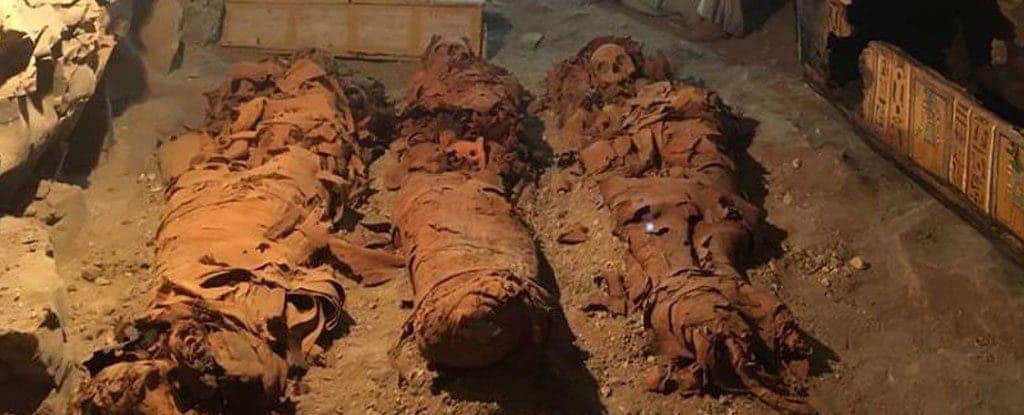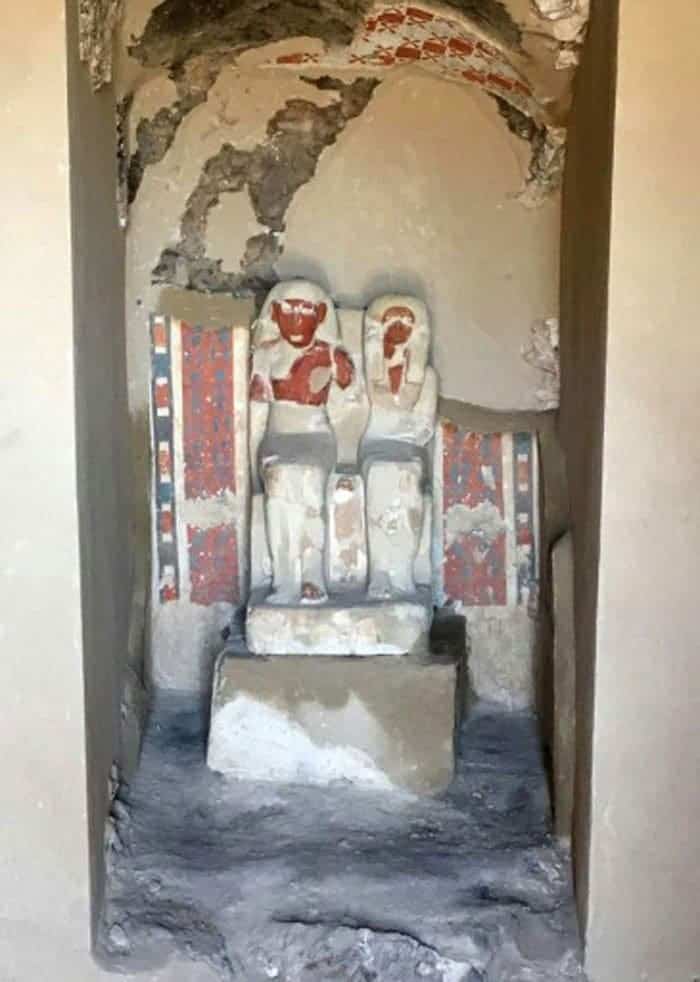They used to say all the tombs in Egypt had been found. They were wrong.

Egyptologists have found the exquisite tomb of a royal goldsmith who lived near Luxor. The tomb isn’t in a very good shape after all this time, but archaeologists did uncover statuettes, mummies, pottery, and other burial artifacts, according to Egypt’s Ministry of Antiquities, Khaled al-Anani:
“We found many objects of the funerary equipment inside and outside the tomb. We found mummies, coffins, funerary combs, funerary masks, some jewellery, and statues. The work did not finish yet.”
The highlight is a statue of Amenemhat, the goldsmith of the god Amun, the period’s most powerful deity sitting beside his wife. Given that this statue is generally associated with abundance and riches, officials hope that work in the area will uncover even more valuables. Archaeologists also discovered four new names, which seem to suggest that more tombs await discovery in the area.
“What about those four new names? How about their tombs? Their tombs are not discovered yet. But I believe they are owners of the tomb,” he said. “I believe, inshallah [God willing], for the coming season, we are going to do our excavations. We are going to do our excavations in this area. So I believe we can find one, or two or maybe four if we are going to be very lucky, four of them in this area.”
Wearing masks and latex gloves to avoid doing damage, archaeologists uncovered a trove of objects. They also found several mummies belonging to ancient Egyptian people, their sarcophagi covered with intricate red, blue, black, green, and yellow drawings and sculptures of their owner’s faces. At this point, it’s not clear how these mummies are related to Amenemhat and to each other, but one theory is that… they’re not. The tomb might have been opened to accommodate more mummies during the 21st Dynasty, about 3,000 years ago, to protect them in a period when grave robbing was very common. Given the stash that was found in the trove, they seem to have been successful.

The findings were made in Luxor, the ancient city of Thebes, the great capital of (Upper) Egypt during the New Kingdom, and the glorious city of Amun. This is also close to the famed Valley of the Kings, the resting place of some of Egypt’s most important rulers, including Tutankhamun and Ramses III. It’s impressive that after all this time, after over a century of research and diggings, we can still find new things. In fact, we may have just scratched the surface.
“Modern Egypt is built on top of ancient Egypt,” former Egyptian minister of antiquities, Zahi Hawass, told The Guardian. “Until now we’ve only found 30 percent of the Egyptian monuments; 70 percent is still buried.”






